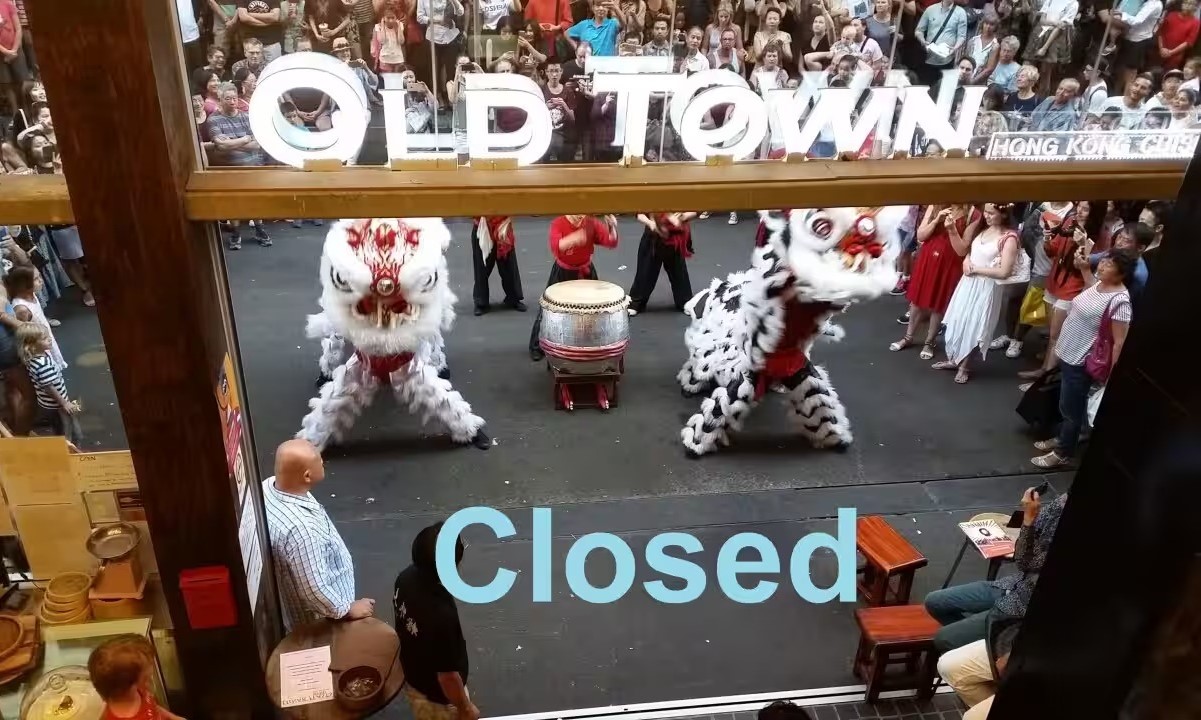Home>Arts and Culture>Why Calling Tet “Chinese New Year” Can Cause Serious Offense In Vietnam?


Arts and Culture
Why Calling Tet “Chinese New Year” Can Cause Serious Offense In Vietnam?
Published: February 11, 2024
Discover why referring to Tet as "Chinese New Year" can be deeply offensive in Vietnam. Explore the cultural significance and traditions of Tet in this insightful article on arts and culture.
(Many of the links in this article redirect to a specific reviewed product. Your purchase of these products through affiliate links helps to generate commission for Noodls.com, at no extra cost. Learn more)
Table of Contents
Introduction
Tet, the Vietnamese Lunar New Year, is a vibrant and cherished cultural celebration that holds deep significance in the hearts of the Vietnamese people. This annual festival marks the arrival of spring and is a time of immense joy, familial bonding, and age-old traditions. However, the terminology used to refer to Tet has sparked controversy and offense, particularly when it is mistakenly equated with "Chinese New Year."
The distinction between Tet and Chinese New Year is not merely a matter of semantics; it is rooted in historical, cultural, and national identity. Understanding the intricacies of Tet and its unique place in Vietnamese culture is essential to appreciating the depth of emotion and pride associated with this revered holiday. Delving into the history, customs, and symbolism of Tet unveils a rich tapestry of traditions that have endured for generations, shaping the collective consciousness of the Vietnamese people.
As we embark on this exploration of Tet and its significance, it becomes evident that the conflation of Tet with Chinese New Year is not merely a linguistic oversight but a sensitive issue that touches the core of Vietnamese heritage. By delving into the historical roots and cultural nuances of Tet, we can gain a profound understanding of why mislabeling this auspicious occasion can evoke strong sentiments and provoke deep-seated offense within the Vietnamese community.
Join me on this enlightening journey as we unravel the captivating story of Tet and delve into the reasons why misnaming this cherished holiday can lead to profound cultural misunderstandings and hurtful implications. Let us embark on a voyage of discovery, gaining insight into the essence of Tet and the profound impact of cultural sensitivity in our interconnected world.
The History of Tet in Vietnam
The history of Tet in Vietnam is a tapestry woven with ancient traditions, cultural influences, and profound significance. Dating back thousands of years, Tet, short for Tet Nguyen Dan, is deeply rooted in the agricultural rhythms of Vietnam and the lunar calendar. Its origins can be traced to the Hong Bang Dynasty, marking the transition from winter to spring and the beginning of a new agricultural cycle. This pivotal juncture in the agricultural calendar was celebrated with rituals and festivities to honor the gods and ancestors, seeking blessings for a bountiful harvest and prosperity in the coming year.
Over the centuries, Tet evolved into a multifaceted celebration, encompassing a myriad of customs and rituals that reflect the rich tapestry of Vietnamese culture. The festival embodies a harmonious blend of indigenous traditions and influences from Confucianism, Buddhism, and Taoism, each contributing to the intricate fabric of Tet's customs and practices.
Tet holds a special place in the hearts of the Vietnamese people, transcending its agricultural origins to become a time-honored occasion for family reunions, ancestral veneration, and communal solidarity. The festival is imbued with a profound sense of reverence for ancestors, with elaborate rituals dedicated to honoring the spirits of the departed. Families meticulously clean and decorate ancestral altars, offering symbolic food, flowers, and incense as gestures of respect and gratitude.
Moreover, Tet is a time of renewal and hope, symbolized by the custom of welcoming the Kitchen God back to earth and bidding farewell to the troubles of the past year. The festival is marked by vibrant street parades, traditional music and dance performances, and the iconic Tet flower markets, where blossoms such as peach blossoms, apricot blossoms, and kumquat trees adorn homes and public spaces, symbolizing new beginnings and good fortune.
The history of Tet in Vietnam is a testament to the resilience and enduring spirit of the Vietnamese people, who have preserved and cherished their cultural heritage amidst the ebb and flow of history. This annual celebration serves as a poignant reminder of the nation's rich traditions, fostering a profound sense of identity and belonging among the Vietnamese populace.
As we delve into the history of Tet, we gain a deeper appreciation for the cultural legacy that permeates every aspect of this revered festival, shaping the collective consciousness of Vietnam and fostering a profound sense of unity and pride.
The Significance of Tet in Vietnamese Culture
Tet, known as Tet Nguyen Dan, holds profound significance in Vietnamese culture, transcending its role as a traditional New Year celebration to become a cornerstone of national identity and communal solidarity. This revered festival serves as a vibrant tapestry of customs, beliefs, and rituals that reflect the rich heritage and values of the Vietnamese people.
At its core, Tet embodies the spirit of renewal and hope, marking the transition from the old year to the new and symbolizing the arrival of spring. The festival is a time of immense joy and anticipation, as families come together to honor their ancestors, express gratitude for blessings received, and set intentions for the year ahead. The significance of Tet extends beyond mere revelry; it encapsulates the essence of familial bonds, cultural pride, and spiritual reverence.
An integral aspect of Tet is the emphasis on familial ties and ancestral veneration. Families meticulously prepare for the occasion, cleaning and decorating their homes, and meticulously tending to ancestral altars. These heartfelt gestures of respect and gratitude underscore the deep-rooted reverence for ancestors, fostering a sense of continuity and connection across generations.
Moreover, Tet serves as a platform for the preservation of age-old traditions and customs that have been passed down through the ages. From the iconic Tet flower markets adorned with vibrant blossoms symbolizing new beginnings, to the jubilant lion dances and traditional music performances that grace the streets, Tet encapsulates the cultural vibrancy and artistic expression of the Vietnamese people.
The significance of Tet also extends to the realm of culinary delights, with an array of traditional dishes that hold symbolic meaning. From savory banh chung (sticky rice cakes) representing the earth, to candied fruits symbolizing a sweet and prosperous future, the culinary traditions of Tet are steeped in symbolism and cultural significance.
Furthermore, Tet embodies the spirit of generosity and compassion, as people extend acts of kindness and charity to those less fortunate, reflecting the ethos of communal harmony and compassion that defines Vietnamese culture.
In essence, the significance of Tet in Vietnamese culture transcends the boundaries of time and space, weaving together the threads of tradition, spirituality, and communal unity. This cherished festival serves as a testament to the resilience and cultural pride of the Vietnamese people, fostering a profound sense of belonging and identity that resonates across the nation.
As we immerse ourselves in the vibrant tapestry of Tet, we gain a profound appreciation for the enduring legacy and cultural richness that permeate every facet of this auspicious celebration, shaping the collective consciousness of Vietnam and fostering a deep sense of unity and pride.
The Connection Between Tet and Chinese New Year
The connection between Tet and Chinese New Year is a subject that beckons us to explore the intricate interplay of cultural exchanges, historical influences, and shared traditions. While both Tet and Chinese New Year are rooted in the lunar calendar and mark the arrival of spring, they bear distinct cultural and historical significance that sets them apart.
Tet, known as Tet Nguyen Dan in Vietnam, is deeply entrenched in the fabric of Vietnamese culture, reflecting the nation's unique customs and traditions. Its origins can be traced back to the agricultural rhythms of Vietnam and the reverence for ancestors, embodying a profound sense of national identity and communal solidarity. On the other hand, Chinese New Year, also known as the Spring Festival, holds immense cultural importance in China and other East Asian countries, symbolizing the onset of the lunar new year with a rich tapestry of customs and rituals.
The historical connection between Tet and Chinese New Year can be attributed to the cultural exchanges and interactions that have occurred between Vietnam and China over the centuries. Vietnam's proximity to China has facilitated the cross-pollination of traditions, beliefs, and practices, leading to shared elements between Tet and Chinese New Year. These shared elements include the use of the lunar calendar, the emphasis on family reunions, and the symbolic significance of certain rituals and customs.
One notable similarity between Tet and Chinese New Year is the practice of offering symbolic gifts and paying respects to ancestors. Both festivals place a strong emphasis on family gatherings, feasting, and honoring the wisdom and guidance of ancestors. The exchange of red envelopes containing monetary gifts, a customary practice during Chinese New Year, also resonates with the tradition of offering gifts and tokens of goodwill during Tet in Vietnam.
Moreover, the culinary traditions associated with Tet and Chinese New Year bear resemblances in terms of symbolic dishes and their significance. While Tet in Vietnam is characterized by the preparation of banh chung (sticky rice cakes) and mut (candied fruits), Chinese New Year features a rich array of traditional delicacies such as dumplings, fish, and longevity noodles, each imbued with symbolic meanings of prosperity, abundance, and good fortune.
Despite these shared elements, it is crucial to recognize the distinct cultural identities and historical contexts that differentiate Tet from Chinese New Year. Tet embodies the unique heritage and traditions of Vietnam, intertwining indigenous customs with influences from Confucianism, Buddhism, and Taoism, while Chinese New Year reflects the rich tapestry of Chinese culture and its myriad regional variations.
In essence, the connection between Tet and Chinese New Year underscores the dynamic interplay of cultural diffusion and shared human experiences, highlighting the enduring legacy of traditions that transcend geographical boundaries. By acknowledging the similarities and distinctions between these two revered festivals, we gain a deeper appreciation for the cultural diversity and interconnectedness that enrich our global tapestry of traditions and celebrations.
Why Calling Tet "Chinese New Year" Can Cause Serious Offense in Vietnam
The act of labeling Tet, the Vietnamese Lunar New Year, as "Chinese New Year" carries profound implications that resonate deeply within the cultural consciousness of Vietnam. This seemingly innocuous misnomer transcends mere linguistic distinctions, striking at the heart of Vietnam's historical identity, national pride, and enduring struggle for autonomy.
At the crux of this issue lies the complex historical relationship between Vietnam and China, characterized by periods of cultural exchange, conflict, and assertion of national sovereignty. Throughout history, Vietnam has fiercely safeguarded its cultural independence and distinct identity, resisting assimilation and preserving its unique traditions amidst the ebb and flow of external influences.
The mislabeling of Tet as "Chinese New Year" represents a poignant reminder of Vietnam's enduring quest for autonomy and recognition on the world stage. It evokes memories of historical struggles against foreign domination and serves as a symbolic affront to the hard-fought battles for cultural preservation and national sovereignty.
Moreover, the conflation of Tet with Chinese New Year diminishes the profound cultural significance and unique customs that define Tet as a quintessentially Vietnamese celebration. It undermines the rich tapestry of traditions, beliefs, and rituals that have been meticulously preserved and cherished by the Vietnamese people for generations.
The act of misnaming Tet not only disregards Vietnam's cultural distinctiveness but also perpetuates a narrative of erasure and marginalization, relegating the nation's heritage to the shadows of a larger, more dominant cultural sphere. It dismisses the resilience and tenacity of the Vietnamese people in safeguarding their traditions and upholding their cultural legacy in the face of historical adversities.
Furthermore, the misidentification of Tet as "Chinese New Year" carries implications of cultural insensitivity and ignorance, reflecting a lack of understanding of the nuanced historical and cultural dynamics that shape Vietnam's national identity. It underscores the importance of cultural awareness and sensitivity in an increasingly interconnected world, where mutual respect and recognition of diverse traditions are paramount.
In essence, the mislabeling of Tet as "Chinese New Year" transcends linguistic oversight, embodying a potent symbol of historical struggles, cultural resilience, and the enduring quest for recognition. It serves as a poignant reminder of the profound significance of Tet in the hearts and minds of the Vietnamese people, encapsulating the nation's unwavering commitment to preserving its cultural heritage and asserting its unique identity on the global stage.
Conclusion
In conclusion, the controversy surrounding the mislabeling of Tet as "Chinese New Year" underscores the profound cultural sensitivities and historical complexities that shape the collective consciousness of Vietnam. Tet, the Vietnamese Lunar New Year, stands as a testament to the nation's rich heritage, enduring resilience, and unwavering commitment to preserving its cultural identity amidst the currents of history. The festival embodies a vibrant tapestry of customs, traditions, and rituals that reflect the spirit of familial bonds, ancestral reverence, and communal solidarity deeply ingrained in Vietnamese culture.
The misnomer of Tet as "Chinese New Year" carries weighty implications that extend beyond linguistic distinctions, delving into the realms of historical struggles for autonomy, cultural preservation, and national pride. It serves as a poignant reminder of Vietnam's enduring quest for recognition and respect on the global stage, encapsulating the nation's unwavering determination to safeguard its unique traditions and assert its distinct identity.
Moreover, the controversy surrounding the mislabeling of Tet underscores the importance of cultural awareness, sensitivity, and mutual respect in an interconnected world. It beckons us to recognize the diverse tapestry of traditions that enrich our global community and to approach cultural exchanges with empathy, understanding, and a deep appreciation for the nuances that define each unique heritage.
As we navigate the complexities of cultural interactions and historical legacies, it becomes evident that Tet holds a special place in the hearts and minds of the Vietnamese people, transcending its role as a traditional New Year celebration to become a symbol of national pride, resilience, and cultural vibrancy. By delving into the history, significance, and controversies surrounding Tet, we gain a profound appreciation for the enduring legacy and cultural richness that permeate every facet of this revered festival, shaping the collective consciousness of Vietnam and fostering a deep sense of unity and pride.
In essence, the controversy surrounding the mislabeling of Tet as "Chinese New Year" serves as a poignant reminder of the enduring significance of cultural heritage, the complexities of historical narratives, and the enduring quest for recognition and respect. It beckons us to approach cultural exchanges with empathy, understanding, and a deep appreciation for the nuances that define each unique heritage, fostering a world where diverse traditions are celebrated, respected, and cherished.














